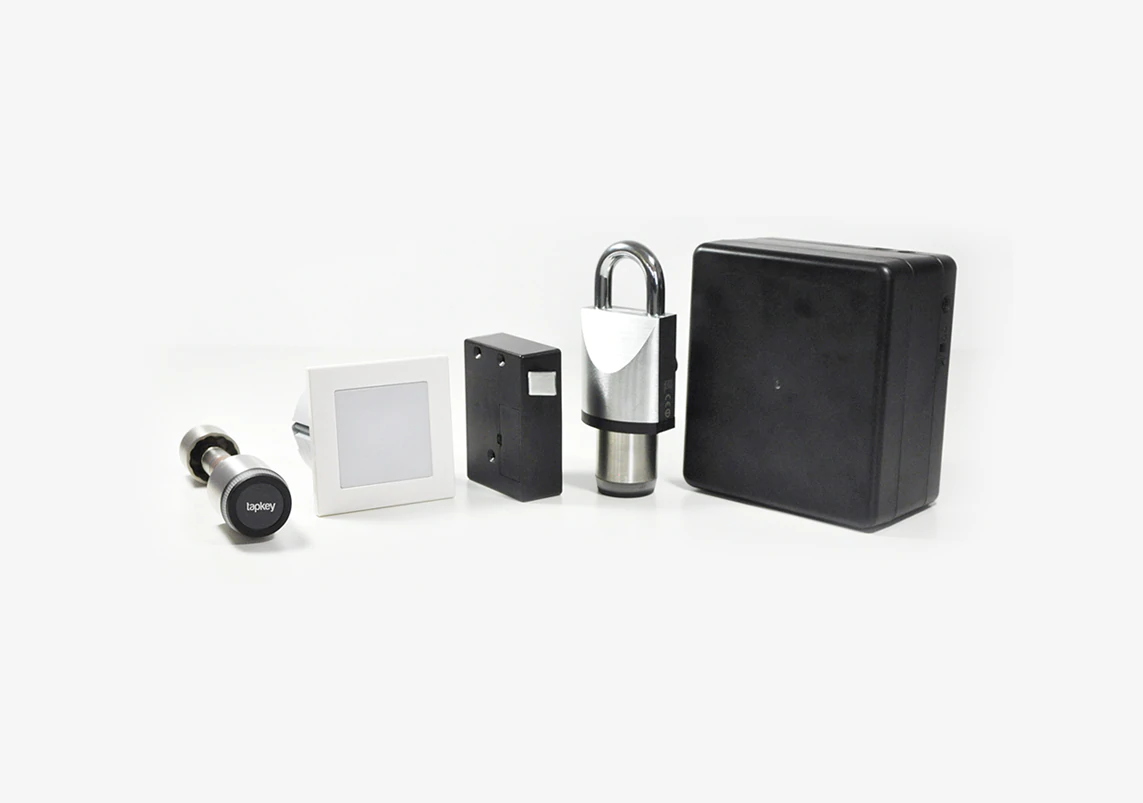We live in an increasingly wireless world. Whether in time and attendance recording, cashless payment or access control: radio technologies are everywhere. But what does NFC, BLE or RFID exactly mean? This article shows what these abbreviations stand for and what differences lie in the technologies. Because the devil is in the detail.
RFID – Radio Frequency Identification
RFID stands for Radio Frequency Identification. It is based on electromagnetic waves and allows the automatic identification and localization of objects and facilitates the capture of data significantly. What is the functionality of RFID? An RFID reader builds up an electromagnetic field and thus transfers energy into the passive medium. This can for example be the credit card or ID card in an access control system. The included chip then starts the communication with the reader.
NFC – Near Field Communications
NFC is not a contradiction to RFID, but a standardised form of non-contact data transmission. In other words: NFC is an international transmission standard for the contactless exchange of data via wireless technology over short distances of a few centimeters. It’s easy, fast and works automatically.
Communication in NFC is always only between two devices. Here, a distinction is made between the initiator (the device that starts the communication) and the target (the device that the initiator wants to communicate with). Further differentiation between the communication modes is possible: active and passive. They describe whether an NFC device itself generates the RF field or uses the RF field generated by another NFC device.
The figure shows a common scenario in which a smartphone in active mode supplies a tag with energy through the generated RF field. Meanwhile, the majority of smartphones are shipped with an NFC chip that allows reading tags. Thus, most Android, as well as Windows Phone powered smartphones can read tags. Only Apple devices can not do this yet. Although certain iPhones are already NFC-capable, the chip can currently only be used for payment via the in-house payment service Apple Pay.

Besides mobile access control, the use cases of NFC range from contactless transactions to self-check ins with AI chatbots. Additionally, NFC is often used in smart posters, digital business cards, and public transport systems, enabling quick and secure data exchange in everyday interactions.
BLE – Bluetooth Low Energy
BLE is the abbreviation for Bluetooth Low Energy and means a radio technology that allows devices to be networked within a distance of about 10 meters. Bluetooth Low Energy is for specific use cases with limited data transfer, such as for example sensors and requires significantly less energy than classic Bluetooth—hence the name Low Energy. An advantage is that sending the data is energy efficient.
As already explained, NFC is currently only available on Android devices, or limited to Apple Pay on iPhones. Therefore, one can assume that Bluetooth Low Energy is more widespread than NFC. But do not worry, Tapkey can do both!
The main difference is the range of the connection. Using NFC, the smartphone must be placed directly on the reader, while you can already unlock the door via Bluetooth from some meters away.
In addition to access control, Bluetooth Low Energy is also used in many other applications. It is used when reading various measurement data, such as the connection between a heart rate monitor and the matching chest strap. The chest strap collects the data and provides it to the heart rate monitor, which retrieves the data. Or another example from everyday life: listening to music. The headset receives the data that your smartphone sends. Beyond these applications, BLE technology is increasingly used in indoor navigation, enabling accurate tracking and guidance within large buildings like shopping malls and airports, making wayfinding simpler and more intuitive for users.





PT Pods—Private Gym Accessed via Smartphone
PT Pods integrates Smart Access. For mobile access [...]
Mehr lesenMar
Coworking—Part of the PropTech Revolution?
What does proptech have to do with coworking? [...]
Mehr lesenFeb
6 Access Control Trends Defining 2025
The latest trends of access control: rise of [...]
Mehr lesenDec
4 Facility Management Trends
Some of the most important discussions around the [...]
Mehr lesenJul